Menu
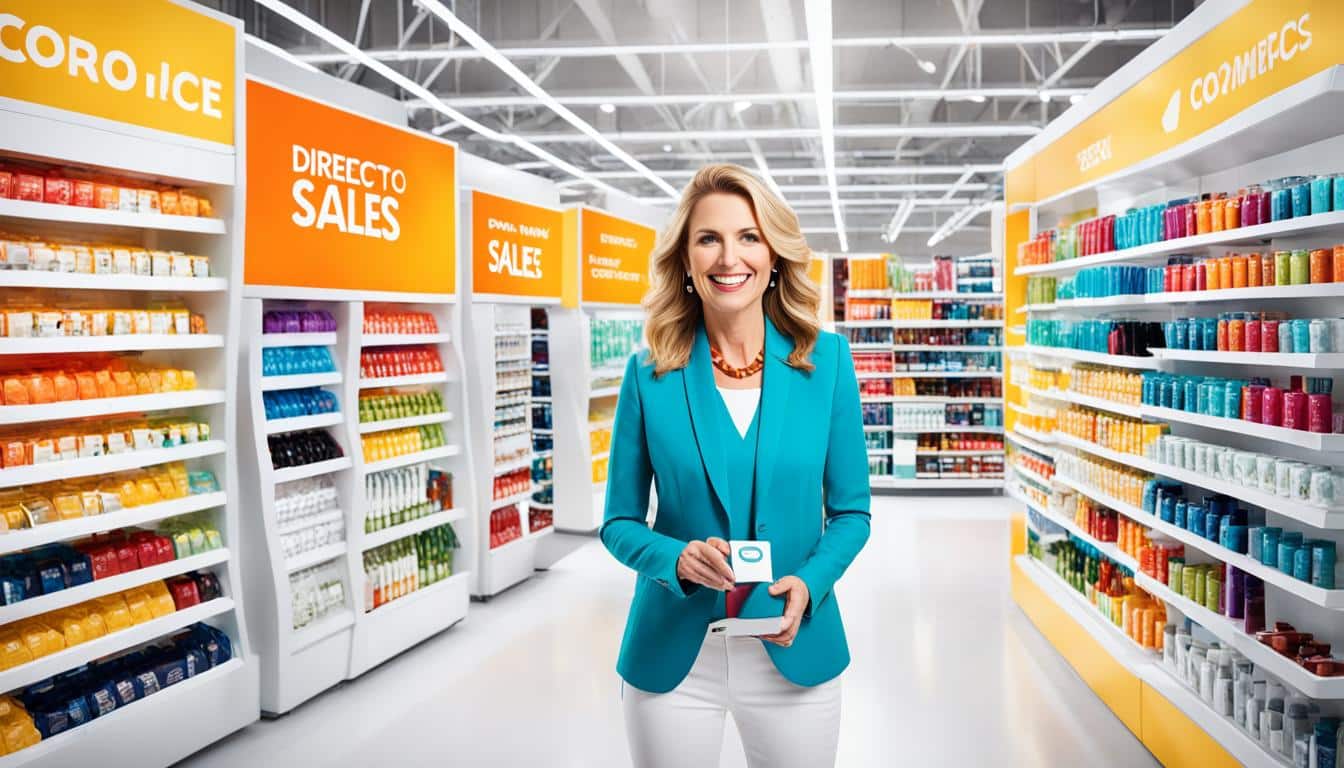
Direct-to-consumer (DTC) sales make up about one in seven e-commerce dollars worldwide. This method lets manufacturers create complete brand experiences, gather data from customers directly, and manage sales more tightly. With the boost from digitisation during the Covid period, the industry is set for more game-changing updates in 2024.
About 34% of European retailers worry direct sales could hurt their business. However, 35% are not bothered, and 23% are unsure. This mix of feelings shows a lively environment where DTC brands can excel. They are finding new ways to grow not just online but also in the real world, thanks to smart partnerships.
Today’s consumers look for great support after they buy, well-informed staff, and deep information about products when they buy directly from the brand. Being careful about prices is also key. This has led to ‘best price’ promises and special customer deals through subscriptions. Plus, getting access to new products first and exclusive deals boosts the appeal of buying directly.
The way we sell is changing fast, from better online brand pages to shared stands in stores. These new moves help reach more consumers and keep them interested. Looking ahead, DTC brands want to focus on personal touches and being kind to the planet. But they also face challenges, like growing in a balanced way and keeping customers coming back.
The direct-to-consumer (DTC) sector looks set to grow in 2024. Digitally born brands are expecting $44 billion in sales, while well-known DTC brands foresee $138 billion. This growth spurt is due to changes in how we shop online. Brands are learning to keep up with new digital trends and smarter ways to attract customers.
DTC sales are climbing for several reasons. Retailers see both the benefits and risks of selling direct. Some worry it might harm business, but many find working directly with manufacturers a smart move. Adding to this is how digital tools help DTC brands connect with consumers. This lets brands offer quick, personal shopping experiences and prices that can rival big stores.
For instance, 66% of DTC businesses say it’s hard to grow because winning new customers is getting more costly. Also, 56% of shoppers want their online shopping to be personalised. This points to the high importance of making sure the buying process online is smooth to not lose sales. Finally, with third-party cookies going away soon, DTC brands need to collect their own customer data for effective personalised marketing.
Knowing how people shop online is central to good DTC plans. Shoppers today expect their online and in-store experiences to blend well. This has led to more people buying on social media, which is becoming a popular way to shop.
With the iOS 14 update, Apple users now have more control over their online privacy. This has made traditional ads online less effective. Now, companies are exploring new routes like sending customers text messages and forming tight-knit online groups. These ways can help build real, lasting connections with people.
“Personalized storytelling and community-building strategies are crucial for brands to distinguish themselves in a crowded DTC market.”
As the world of DTC keeps changing, brands must keep up. This means understanding what customers want and making needed changes. Do this, and growth for DTC brands in 2024 is likely. Here’s a quick look at some key facts that show why these trends matter:
| Metric | Key Insight |
|---|---|
| Digital Native Brand Sales (2023) | $44 billion |
| Established DTC Brand Sales (2023) | $138 billion |
| Consumer Expectation for Personalisation | 56% |
| Shopping Cart Abandonment Rate | Up to 70% |
| Challenge: Customer Acquisition Costs | 66% of DTC companies |
Direct-to-Consumer (DTC) sales are changing fast. Now, more than ever, companies focus on giving us what we want. They use artificial intelligence (AI) and machine learning. These tools make sure each of us gets what suits us best. So, customers are happier and companies earn more while keeping loyalty strong.

Companies need AI and machine learning to personalise our shopping. They look at lots of info about us to guess what we like and our shopping habits. This lets brands suggest what we might want to buy. The pandemic has made personal shopping even more crucial, with most customers trying new shops and products. Many of us, about 71%, expect businesses to treat us differently. It makes 76% of us unhappy when companies don’t meet our expectations.
Businesses that are great at personalisation earn a lot from this approach. They use AI and machine learning to make their customers feel understood. This helps them keep their customers and make them happier. So, the loyalty is strong with such brands.
Some top companies have shown how personalisation can be done right. For example, grocery stores in Europe use our data to find offers that we will like. This makes their ads and offers just right for us. Sephora, on the other hand, makes our shopping fun with AI-powered beauty tips. It’s a hit with their loyal customers in the Beauty Insider group.
Nike lets us design our own clothes and shoes on a cool app. This not only makes us happy but also brings in more sales. Amazon suggests things we might want based on our old buys. It’s another AI success story in online shopping.
| Company | Personalisation Strategy | Outcome |
|---|---|---|
| European Grocery Stores | Segmenting offers based on location and time | Effective targeted promotions |
| Sephora | Virtual makeup trials | Enhanced customer experience |
| Nike | Customisable product platforms | Increased sales and satisfaction |
| Amazon | Personalised product recommendations | Innovative shopping services |
AI and machine learning are reshaping DTC through personalisation. By meeting our unique needs, brands keep us hooked and grow bigger. This approach is not just good for us, giving us what we want. It also makes businesses thrive, attracting and keeping us as happy customers.
Today, the push for sustainable practices and eco-friendly practices is very high. Most consumers, especially the younger crowd, are choosing brands that care for the planet. A study by the Yale Program on Climate Change Communication found that the worry about climate change doubled from 2017 to 2021.
More and more people want to shop in ways that help, not hurt, our planet. A Nielsen study shows that 73% of the world’s shoppers are ready to change their buying habits to be kinder to the Earth. And half of the new sales in the food, beauty, and other everyday products markets came from sustainable choices. Clearly, there is a big desire for products that are good for the planet.
This trend is strong in online shops, too. Experts predict that by 2025, online sales will top $1.6 trillion worldwide. The shift towards eco-conscious buying is seen in the data, with many U.S. customers looking for eco-friendly practices even in their online orders.
Direct-to-consumer (DTC) companies are leading in the move to sustainability. They are using green practices and offering eco-friendly options for their products. This can mean using green packaging, choosing materials made in ways that don’t harm people or the planet, and making sure where they get their materials is clear. Many shoppers are happy to pay a bit more for delivery if it’s done in a way that’s kind to the Earth.
This eco-friendly approach is changing how people shop. A survey found that 72% of shoppers in different parts of the world are picking greener products. Younger people especially are opting for sustainable goods. 75% of millennials are ready to adjust their shopping habits for the Earth.
Recycling is also playing a big part in this. In the U.S., most people can recycle stuff from home. Recycling saves a lot of space in landfills. For example, recycling cardboard can stop it from taking up a lot of landfill space. It also uses less energy than making new cardboard from scratch.
With more and more buyers wanting to shop in ways that protect our planet, DTC brands are making changes. These changes are not just to keep up with what’s popular now. They’re also shaping a better future for how businesses should run, making sure that taking care of the planet is always a top priority.
Subscription-based business models are now key in the direct-to-consumer scene. They drive big growth and bring many benefits. In 2021, the global market for subscription services hit $72.91 billion. It’s set to grow massively to $904.2 billion by 2026. Consumers love the convenience, flexibility, and personalised touch of these services.
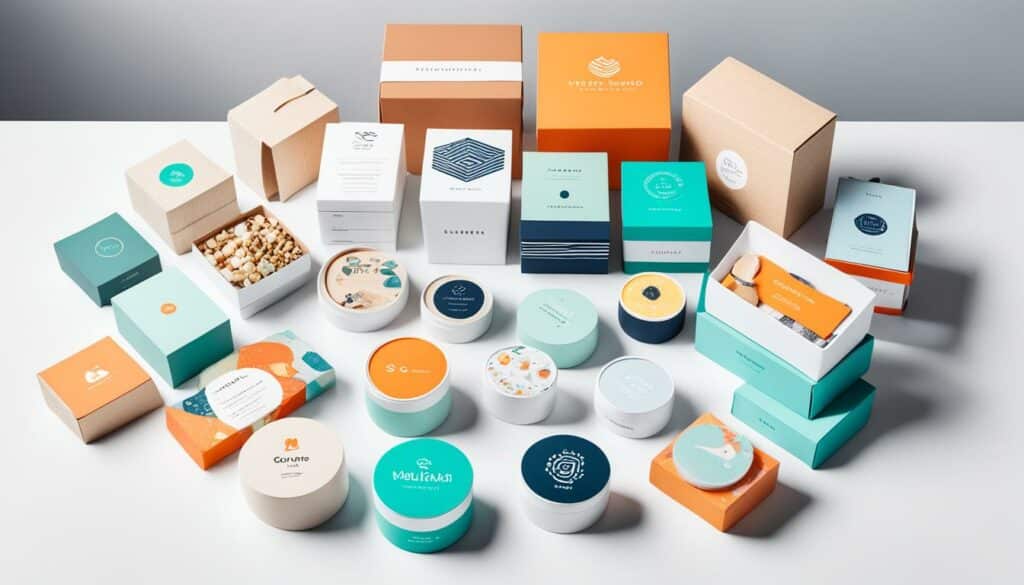
For consumers, these models mean regular access to products. This is with very little effort. Most consumers, about 79% in 2021, like auto-replenishment services. This shows a big move towards making life easier. Personalised experiences matter a lot too. When businesses match what individuals like, 80% of consumers are more willing to buy. This leads to better service, content, and products. It helps keep customers around for the long haul.
For businesses, the benefits are clear too. They get a steady flow of income each month. This helps with cash and makes the business more valuable. Keeping customers interested is key. In 2021, DTC brands grew their customer base by 31%. With the subscription economy set to hit $1.5 trillion by 2025, it’s a great time for companies to jump in. This way, they can enjoy stable and growing profits.
Many DTC brands have done well with subscription models. Take FabFitFun, for instance, with 200 million subscribers. It offers a membership for women to personalise what they get each season. Other success stories include Dollar Shave Club, Warby Parker, Casper, and BarkBox. They’ve built strong followings by regularly offering new products through subscriptions.
Amazon is another great example. It has over 200 million worldwide subscribers. With benefits like fast, same- or next-day shipping for 79% of US members, Amazon has made its subscription model a huge hit. It’s mixed convenience and speed in a way many love.
As more companies use subscription models, the trend is only going up. These services help deepen the bond with consumers. Plus, they bring big business benefits. This strategy strengthens a company’s place in the tough e-commerce world.
Today, using social media wisely is key for brand growth. There are about 4.95 billion social media users worldwide as of October 2023. This makes up around 61.4% of the world’s population. This shows the huge potential for brands to connect with people and grow their market reach.
User-generated content (UGC) is a great way to show your brand is real and build trust. By sharing stories from real customers, you make a stronger bond with people. Studies show that UGC is better at catching people’s interest than regular ads. Now, let’s look at some numbers from key social media sites:
| Platform | Monthly Active Users | Key Demographics | Unique Feature |
|---|---|---|---|
| 3 billion | Diverse age ranges | Cross-posting with Instagram | |
| 130 million (US) | Millennials | Visual content & online store | |
| X (formerly Twitter) | Not specified | Younger audience | Premium subscription for visibility |
| TikTok | 1 billion | Gen Z | Short-form visual content |
| YouTube | Not specified | Diverse age ranges | Longer-form video content |
In marketing, influencers are now very important for direct sales to consumers (DTC). By working with influencers, brands can reach new people and build trust easily. The influencer marketing sector is growing and is expected to reach $15 billion. It’s very effective, bringing more profit compared to other ways. This is because influencers can make brands seem more friendly and trustworthy.
So, a good strategy is to use both user content and influencer partnerships to grow on social media. These are key factors for winning in the social media marketing game, helping to connect with consumers and grow the brand’s market.
Buy Now, Pay Later options are becoming more popular. It’s expected that 93.3 million people in the US will use them in 2024. These methods make it easier to buy online and have made shopping experiences better.
During the 2023 holiday season, $16.6 billion was spent using BNPL. On Cyber Monday, $940 million was spent, a huge 42.5% increase from the previous year.
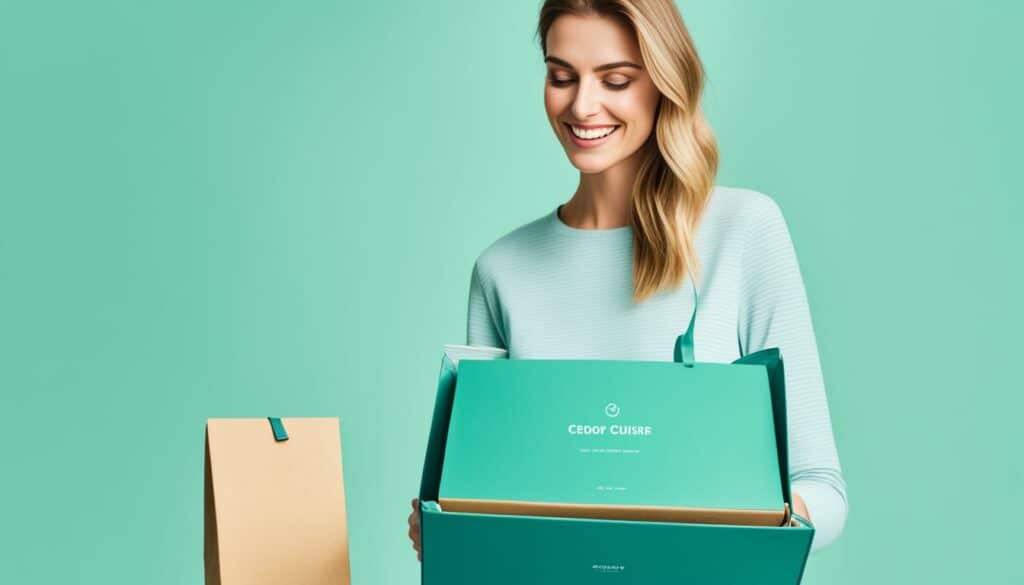
BNPL has changed how we spend money. It lets us get things quickly without paying all the money upfront. This has made people buy more often. In 2024, it’s predicted that Americans will spend $80.77 billion using BNPL.
Younger people like millennials and Gen Z are using BNPL the most. But some older generations are using it too. 32.6% of Gen X and 15.3% of baby boomers will buy things using BNPL in 2024.
DTC brands that sell straight to customers have added BNPL options to their websites. They work with companies like Afterpay and Klarna. This makes customers happy and boosts sales.
People using BNPL are willing to spend more. In 2021, the average amount spent using BNPL was $135. This was more than the $121 spent in 2020.
As BNPL gets more popular, online brands will also see more loyal customers.
BNPL is now a big part of online shopping. Brands can win new customers and keep the old ones happy by offering BNPL.
In 2022, Acquia’s report showed something interesting. It said 88% of marketers see first-party data as very important for businesses now. This data has really become a key element, especially for brands that sell directly to their customers. By getting information straight from customers, these brands can make shopping more personal. They can also make marketing that fits each customer better. This all helps to make relationships with customers stronger.
With privacy becoming a bigger issue, Deloitte found something else. They said 73% of people think using first-party data could help with these privacy worries. Google Chrome is also going to stop using third-party cookies by the end of 2024. This makes first-party data even more important.
Companies like Yeti have shown what’s possible by using customer data wisely. Yeti used what they knew about their customers to make their experiences better. This led to a 27% increase in people buying from them. It clearly shows how powerful first-party data is for businesses.
Getting to know about customers through their data has many advantages. For brands selling directly to customers, it helps them understand what each customer wants more clearly. This understanding leads to bigger sales at each time and more sales overall. Keeping track of customer needs and staying in touch with them are very important. That way, the personalized experience keeps going.
DTC brands are moving more towards using first-party data. They’re doing this to make customers want to keep coming back. Using this data wisely helps in making customer experiences special. It also allows businesses to predict what customers might want next. Plus, it gives them deep insights into who their customers really are.
| Percentage | Description |
|---|---|
| 88% | Marketers who deem first-party data crucial |
| 73% | Respondents believe first-party data can mitigate privacy concerns |
| 27% | Conversion rate increase from personalised interactions |
| 99% | CG executives prioritizing DTC initiatives |
| 43% | CG leaders fully satisfied with leveraging customer insights |
In conclusion, first-party data is changing how companies that sell directly to customers see their market. It’s helping them understand and act on what customers really want better and quicker.
In the world of direct-to-consumer (DTC) sales, it’s very hard to get new customers. Costs keep going up, and there are more businesses fighting for the same market. This got worse during the pandemic, when everyone started shopping online more. Startups and big brands alike are trying to win customers directly, creating a tough battle.

The money it takes to get new customers for DTC brands has shot up by 222% from 2013 to 2022. A big reason is the higher cost of online ads, especially on sites like Facebook and Google. Because getting customers is now so expensive, these brands are struggling to keep growing and earn enough profit.
Adding to the difficulty, the DTC field is more crowded than ever. In 2019, the U.S. had 320 DTC companies. By 2023, this number had skyrocketed to over 110,000. As a result, it’s mainly big names like Nike and adidas that are expected to dominate DTC sales by 2025. Smaller and new brands face an uphill battle to get noticed among the many options.
In this competitive scene, standing out and building customer loyalty are key. DTC brands are focusing on unique marketing and making their customers feel special. They use methods like telling their story and offering something exclusive to catch the eyes of buyers.
Creating a smooth operation and high-quality products also makes a difference. By focusing on what they do best and creating a strong connection with their customers, DTC brands can turn buyers into loyal fans. A big part of this involves talking with customers in ways that matter to them and using the latest tech to tailor their experience.
| Challenges | Statistics |
|---|---|
| Customer Acquisition Cost | Increased by 222% (2013-2022) |
| Market Competition | Over 110,000 DTC companies in 2023 (up from 320 in 2019) |
| Brand Loyalty Tactics | High-quality products, effective differentiation strategies |
| Rising Advertising Costs | Significantly impacted by platforms like Facebook and Google |
To grow and succeed, DTC businesses need to pull customers in while keeping them happy. This takes both smart advertising and tactics that build strong relationships with buyers. Staying ahead in a fierce market requires ongoing innovation and adaptation.
The online world is huge, but DTC brands know there’s value in meeting customers face to face. So, they’re opening stores and pop-ups. These places offer real connections and experiences you can touch, going beyond the online world.
In-store setups really strengthen a DTC brand’s position irl. Pop-ups, on the other hand, are quick ways to make a big impact. They get the brand out there in fun, specific ways. Consumers love exploring these unique set-ups, which drives excitement and sales for the brand.
Today, people want a mix of online and real-world shopping. This blend is known as an omnichannel approach. It joins the digital and physical world, giving customers the best of both. This way, stores can know what online visitors like. Then, they make shopping in-store just as personal and special.
Mixing online and offline makes brands stronger and more lovable. DTC brands that balance both worlds well see big success and happy, returning customers. It’s all about being great at connecting through screens and in person.
Inflation hits consumer spending hard, affecting people worldwide. In the US, inflation was high, reaching 9.1% in June 2022. Still, 83% of Americans worried about prices going up. By January 2024, inflation had dropped to around 3%, but 73% of Americans were still troubled by rising costs. Brands, especially those selling directly to consumers, have changed their prices to fit these new spending habits.
Brands are finding new ways to deal with inflation’s impact on spending. As inflation got milder, the financial well-being index improved from a low of 70.7 in June 2022. Companies are making changes like adjusting subscription plans, offering the ‘best price,’ and giving loyalty discounts. This has led to fewer people delaying big purchases, dropping from 56% to 42%. It shows that brands are seeing chances to bring customers back with better prices.
People’s spending habits change a lot with inflation. While spending on food stayed steady thanks to saving methods, buying from places like restaurants and for fun lessened. Many, around 37%, have started buying cheaper things. This shows that when prices rise, people change the brands they buy, looking for the best value.
People with more money are also saving where they can, showing everyone is looking for good deals. This trend towards saving means that brands need to make sure they offer competitive prices.

| Consumer Concern Areas | Percentage Mid-2022 | Percentage Mid-2023 | Change |
|---|---|---|---|
| Savings Concerns | 62% | 44% | -18% |
| Making Payments | 32% | 20% | -12% |
| Delaying Large Purchases | 56% | 42% | -14% |
| Personal Savings Rate (Below Long-Term Average) | 2 years | — | — |
People first stepped back from big spending, but now they’re starting again as they feel more secure. Banks, brokers, hotels, and airlines are now in a tough fight for these spent dollars, especially with more vacations expected. This is mostly true for those with lower and middle incomes.
Brands need to really understand these changes in what people want. They have to adjust their prices to match the new consumer habits to keep up with the ever-changing economy.
In the ever-changing world of direct-to-consumer (DTC) business, social commerce is changing how we shop. Platforms now let people buy things fully, right on social media. This means more people are using social media to shop and spending their money there too.
Shopping directly on social media is becoming very popular. By 2024, it’s estimated that U.S. adults will spend a lot of their time on social media buying things. Apps like TikTok, Facebook, and Instagram are at the forefront. They’re easy to use and keep people interested. A big chunk of young digital buyers in the U.S., those 18 to 34, have already bought stuff on Instagram (28%), Facebook (26%), and TikTok (22%).
Live shopping is really shaking up how we buy things, making shopping an interactive event. Influencers often host these events, making the whole experience more enjoyable. It feels like a group activity, and people get very interested fast.
Events hosted by influencers on Instagram and Facebook are doing really well. For instance, in 2023, more than half of young U.S. shoppers said they’d be using TikTok for their holiday shopping.
If we look ahead, it’s clear that shopping on social media is growing fast. By 2024, it’s predicted that Facebook, Instagram, and TikTok will all see millions of people buying things through them. These numbers really show how much shopping this way is taking off.
| Platform | Projected Social Buyers (2024) |
|---|---|
| 64.6 million | |
| 46.8 million | |
| TikTok | 40.7 million |
The growing influence of social commerce and live shopping tells us a lot about how people shop now. Both methods offer different, more fun ways to buy. As these experiences get better and better, businesses need to join in to connect with customers. They should aim to offer smooth buying journeys and fun interactions.
Zero-party data is key in today’s digital world for customised marketing. It’s data shared directly by the customer with the brand. By getting data this way, brands can create very personal experiences for their consumers.
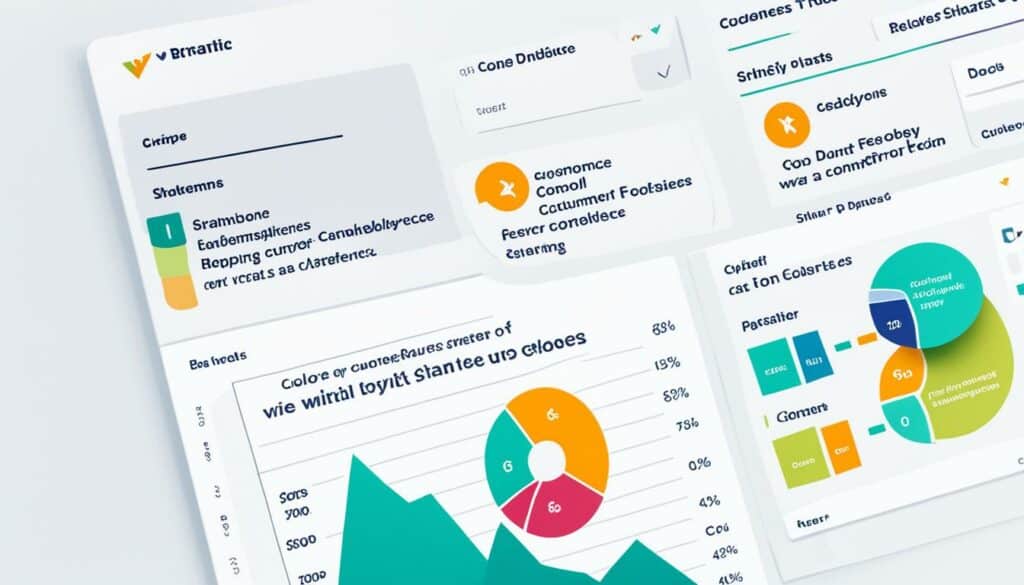
DTC brands use cool ways to get this special data. They use things like quizzes, surveys, and forms with questions about what customers like. For instance, Sephora’s Beauty Insider gets personal info to give custom beauty tips and deals. Online tools also help. They let brands pick the right marketing moves.
Here’s how methods of data collection compare:
| Data Type | Collection Method | Accuracy | User Consent |
|---|---|---|---|
| Zero-party data | Forms, quizzes, preference fields | High | Active |
| First-party data | Website/app interactions | Moderate | Passive |
| Second-party data | Shared first-party data | Varies | Depends |
| Third-party data | Aggregated from various sources | Low | Indirect |
Using zero-party data can lead to great success stories. For example, Ipsy, a makeup brand, uses personalisation to recommend products. This not only makes shopping better but also wins trust and loyalty from customers.
Yelp and Sephora are also doing amazing things with zero-party data. They look at what customers like and do to suggest products they might love. This leads to more sales and happier customers.
Zero-party data is a big help in custom marketing. It makes sure marketing is both personal and respects privacy laws. It also builds strong relationships with customers.
The world of digital marketing trends is evolving rapidly. Notably, fewer companies are relying on paid ads. This change comes after updates like Apple’s iOS 14 altered traditional advertising methods. Now, companies are exploring more natural ways to connect with their audiences.
One popular approach is telling stories that resonate with people. By sharing unique stories, companies are attracting and keeping customers. This builds brand presence without heavy advertising.
SMS marketing is also on the rise. It boasts higher customer engagement than email. This method keeps brand communication direct and personal, which is favoured now more than ever.
The Netomi State of Customer Service report reveals that 39% of people have less patience now than before the pandemic, making it critical for brands to engage effectively and swiftly.
Furthermore, community platforms are proving to be valuable for customer reach. They create a sense of community around brands, boosting loyalty. This helps reduce reliance on ads while making lasting connections.
User trust plays a huge role in buying decisions. Research, like that from PWC, shows a big gap in how much trust consumers give and what brands think they have. Therefore, building real connections is key to moving away from paid ads.
| Change in Consumer Reliance | Percentage Change |
|---|---|
| Websites | -5% |
| Sales Teams | -4% |
| Review Sites | +5% |
The shift away from paid ads is both challenging and promising. Companies can now focus on meaningful connections. With methods like SMS marketing and community platforms, they pave a new, more engaging way forward.
Partnerships between direct-to-consumer (DTC) brands and traditional retailers are growing. A 2019 eMarketer report identified over 400 DTC companies, showing the market’s growth. Retailers use these partnerships to blend their online and offline channels. This creates a smooth shopping journey for customers.
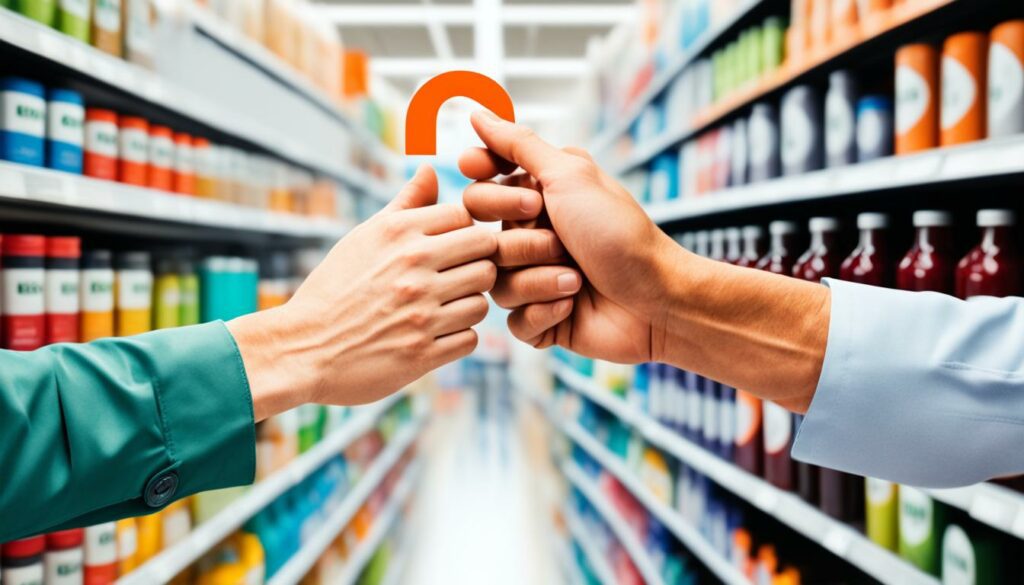
There are clear benefits when DTC brands and retailers work together. First, they reach more customers. Retailers can sell unique DTC items. This makes their stores more appealing and attracts new shoppers. For example, Walmart partnered with SmileDirectClub to sell special dental care products.
These partnerships also make shopping more personal. Retailers aim to stand out in a crowded market. Offering exclusive DTC goods can help. Scott Clarke, of the consumer products industry, says this is key for staying ahead.
There are many success stories in partnerships. Nordstrom has excelled with brands like Thinx and Stella & Dot. They provide unique shopping experiences. This adds value for customers and builds strong connections.
Brands like Fabletics and Warby Parker are using stores in smart ways. They combine offline and online shopping. This gives customers the best of both worlds. RetailTouchPoints found that 90% of retailers will offer BOPIS by 2021. This shows a clear move to mix online and offline shopping.
As innovation continues, DTC and retail partners focus on personal and special experiences for their customers. Exclusive items and new tech are part of this. These efforts are reshaping retail for the better. In the end, all sides win, especially the shoppers.
In the direct-to-consumer (DTC) world, making it easy for customers to return things is key. This approach keeps customers happy and coming back by ensuring their experience is simple.
DTC brands are getting creative with how they do returns. They’re using advanced tech like AI and Machine Learning to understand what customers want. This makes returning items smoother.
Also, tech such as AR and VR is helping. These tools lower the number of items returned. They do this by letting customers see and feel products before they buy them.
Easy returns are extremely important in a competitive market. Brands that make returning simple earn better reviews from customers. This, in turn, boosts customer loyalty and more sales.
Having clear and fair return policies is crucial for success. It shows a brand cares about satisfying its customers over the long haul.
| Key Factors | Impact on Returns |
|---|---|
| AI and Machine Learning | Streamlined automation and improved consumer insights for efficient returns |
| AR and VR Technology | Reduction in return rates through immersive customer experiences |
| Transparency and Fairness | Enhanced customer trust and retention |
DTC brands are always working to make their returns better. Their aim is to make returns smooth and easy for customers. This ensures customers stay satisfied and loyal in the long run.
Looking forward to 2024, direct-to-consumer (DTC) marketing is constantly changing. This change is due to the way people shop online and their desires. The pandemic led to a big move to online shopping and a higher demand for DTC products.
This new way of buying presents challenges for DTC brands. There’s now more competition and it’s harder to get new customers. Even big companies like Casper and Outdoor Voices are feeling the pressure on their profits and growth.
To survive and thrive, DTC brands need to be flexible and come up with new ideas. Using data to make shopping more personal has been a big win. DTC brands usually make more money and keep their customers better than traditional stores.
As rules about privacy get stricter, collecting data directly from customers is more important. This helps DTC brands connect with their buyers better and do marketing that really works.
There are other big trends like buying through social media, subscriptions, and caring for the environment. DTC brands must also focus on making their products well and working well with other businesses.
Understanding what buyers want and how they shop is key. It helps DTC brands stand out and keep up in the online market.
In 2024, the DTC sales trends continue to grow. Brands are exploring beyond just online. They’re adding unique shopping experiences and eco-friendly options.
They’re also using subscription services more often. This approach fits what customers want, like personalisation and sustainability.
How people act online is vital for DTC brands. They use this info to guide their sales and marketing choices. This helps them be more helpful when selling products and services.
Tools like AI and machine learning are used to look at customers’ data. With this, they suggest products that suit each person. This makes shopping more personal and enjoyable.
Sephora has platforms where you can try makeup online. Nike lets customers customise their products. And European markets use data to offer personalised deals. These are great ways to keep customers interested and coming back.
More people, especially younger ones, want to buy from green companies. These brands use eco-friendly materials and packaging. DTC companies are picking up on this and making their products more responsibly.
DTC brands are working on being more green. They’re doing this by making sure their products come from ethical sources and packaging things in sustainable ways. More people are choosing to buy these kinds of items, and DTC brands are listening.
These models help companies know how much money they’ll make regularly. For customers, they offer convenience and a chance to regularly get what they need. This keeps customers happy and coming back.
Brands like Dollar Shave Club and Warby Parker are great examples. They have found success through subscription services. This helped them build strong relationships with their customers.
DTC brands are using social media to get closer to their customers. They do this by sharing real-life stories and working with popular online personalities. This helps them get noticed and liked.
Influencers play a big part in DTC sales by recommending products to their followers. This makes their recommendations feel trusted. It’s like getting advice from a friend, which often leads to more sales.
BNPL options have made buying easier for shoppers. They have made it less stressful to shop by spreading out payments. This means more people can buy what they need when they need it.
These brands have added BNPL options to their checkouts. This lets shoppers pay how and when they can. It’s good for shoppers and the business, making things more flexible.
First-party data helps brands get to know their customers better. This info is crucial for making shopping more personal and for creating ads and promotions that really speak to people. It comes right from the customers.
It’s getting harder and more expensive to find new customers. To win new buyers, brands must stand out. They do this by telling their stories well and making sure their products are truly special.
DTC brands are starting to show up offline more with special shops and pop-ups. This lets customers touch and feel the brand. It makes shopping more interesting and personal.
With prices going up, brands are rethinking how they price their goods. They’re offering deals like subscriptions and staying attractive by rewarding loyalty. This helps them keep making money while keeping their customers happy.
It’s about buying straight from social media, making shopping easy and fun. Special live shopping events and deals are drawing in customers. This way of shopping feels more social and interactive, encouraging more people to buy.
By using fun quizzes and helpful interactive bits online, brands are getting info right from the customers. This data is golden for making shopping experiences truly personal. It makes customers feel seen and understood.
With stricter privacy rules, DTC brands can’t use as much data from others for ads. So, they’re focusing on telling their stories, sending texts, and building communities. This way, they get to know their customers themselves.
Both types of shops benefit when they work together. DTC brands get to meet new shoppers in person, while traditional shops get new, exciting products. Together, they make shopping a great experience for everyone.
By making returns easy and without stress, DTC brands keep their customers happy. Clear rules and lots of options make sure people come back to shop again. It’s all about making shopping hassle-free and friendly.